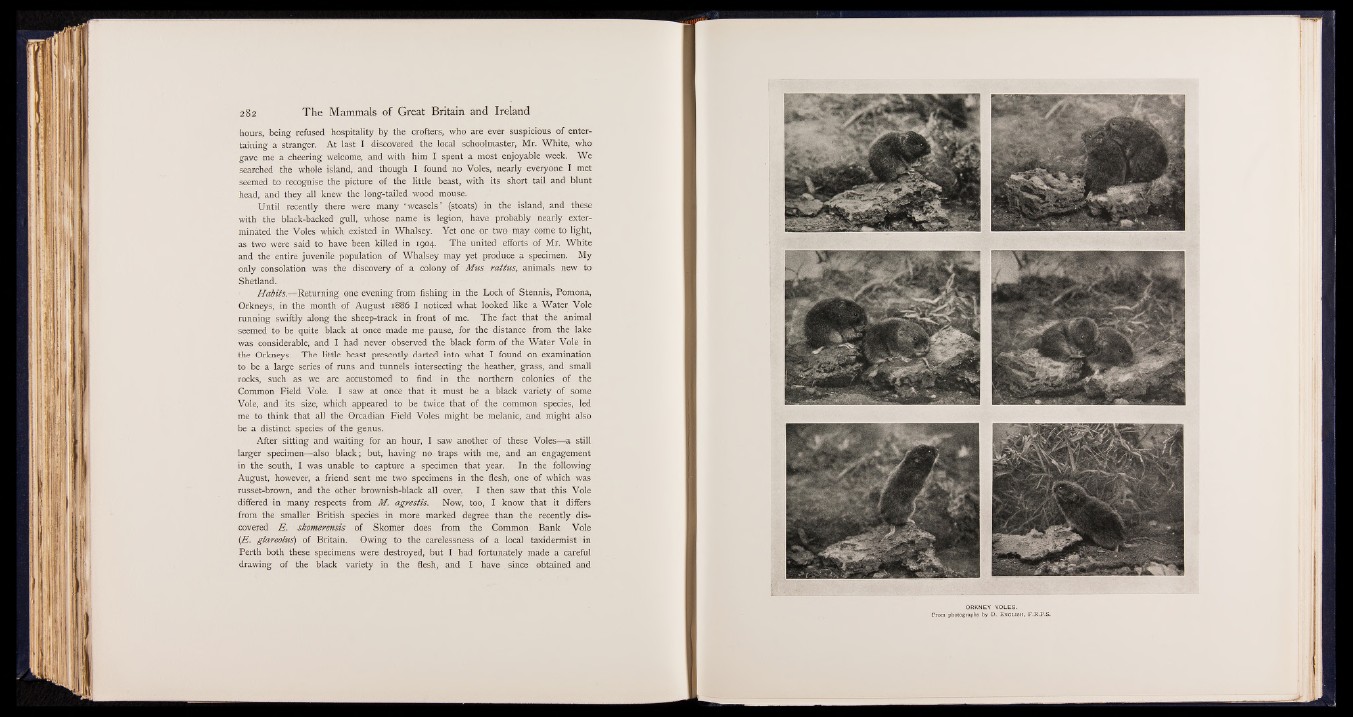
hours, being refused hospitality by the crofters, who are ever suspicious of entertaining
a stranger. At last I discovered the local schoolmaster, Mr. White, who
gave me a cheering welcome, and with him I spent a. most enjoyable week. We
searched the whole island, and though I found no Voles, nearly everyone I met
seemed to recognise the picture of the little beast, with its short tail and blunt
head, and they all knew the long-tailed wood mouse.
Until recently there were many ‘ weasels’ (stoats) in the island, and these
with the black-backed gull, whose name is legion, have probably nearly exterminated
the Voles which existed in Whalsey. Yet one or two may come to light,
as two were said to have been killed in 1904. The united efforts of Mr. White
and the entire juvenile population of Whalsey may yet produce a specimen. My
only consolation was the discovery of a colony of Mus rattus, animals new to
Shetland.
H abits.—Returning one evening from fishing in the Loch of Stennis, Pomona,
Orkneys, in the month of August 1886 I noticed what looked like a Water, Vole
running swiftly along the sheep-track in front of me. The fact that the animal
seemed to be quite black at once made me pause, for the distance from the lake
was considerable, and I had never observed the black form of the Water Vole in
the Orkneys. The little beast presently darted into what I found on examination
to be a large series of runs and tunnels intersecting the heather, grass, and small
rocks, such as we are accustomed to find in the northern colonies of the
Common Field Vole. I saw at once that it must be a black variety of some
Vole, and its size, which appeared to be twice that of the common species, led
me to think that all the Orcadian Field Voles might be melanic, and might also
be a distinct species of the genus.
After sitting and waiting for an hour, I saw another of these Voles—a still
larger specimen—also black; but, having no traps with me, and an engagement
in the south, I was unable to capture a specimen that year. In the following
August, however, a friend sent me two specimens in the flesh, one of which was
russet-brown, and the other brownish-black all over. I then saw that this Vole
differed in many respects from M. agrestis. Now, too, I know that it differs
from the smaller British species in more marked degree than the recently discovered
E . skomerensis of Skomer does from the Common Bank Vole
(E . glareolus) of Britain. Owing to the carelessness of a local taxidermist in
Perth both these specimens were destroyed, but I had fortunately made a careful
drawing of the black variety in the flesh, and I have since obtained and